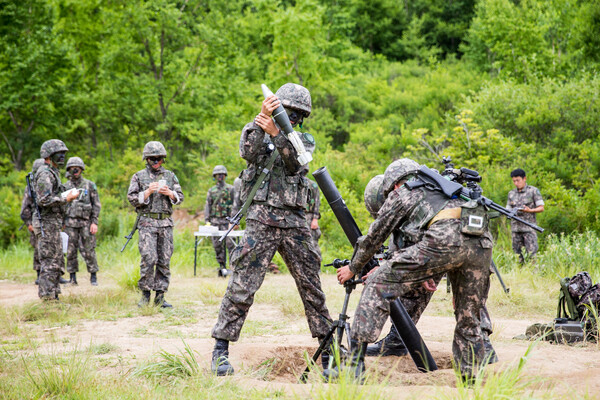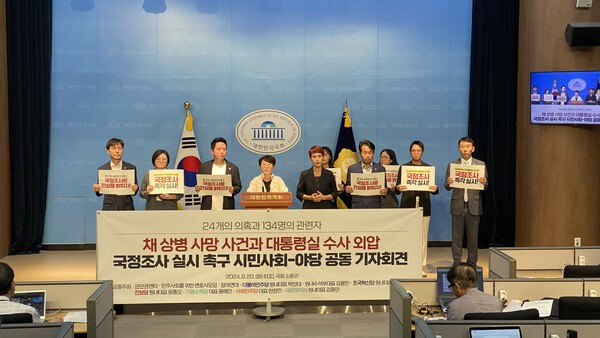Walking down the street, you can easily spot young men in military uniforms. Their numbers increase, particularly in transportation hubs like the East Seoul Terminal or Seoul Station. To those unfamiliar, it might seem like a war is taking place, but these are simply soldiers either returning from, or returning home for, their vacation. Since the outbreak of the Korean War in 1950, South Korea has remained divided, and the conflict has not officially ended, remaining in a state of armistice. Under these circumstances, South Korea continues to enforce a conscription system where all healthy men are required to serve in the military for a certain period. This service is not only a legal obligation but also a cultural milestone—an experience that profoundly shapes the identity of Korean men. Military life leaves behind vivid stories—often told with humor, frustration, or quiet reflection. To outsiders, they may seem exaggerated, but for those who served, they are rooted in reality. From strict discipline to unlikely bonds, these memories often become unforgettable parts of one’s life. Through this article, The Dongguk Post will introduce how South Korea’s conscription system is structured, how it has transformed from the 1960s to the present day, and how soldiers’ lives, both inside and outside the barracks, have evolved along with it.

Conscription Systems of Korean military
In South Korea, all men over the age of 18 are obligated to serve in the military. They can choose to serve in the Army, Navy, or Air Force, with varying lengths of service: 18 months for the Army, 20 months for the Navy, and 21 months for the Air Force. The Air Force has the longest service period, and it has become highly competitive due to the perception of better living conditions. In addition, there are alternative service options, such as social service workers, industrial service personnel, and professional research personnel, as well as exemptions. A volunteer enlistment system also allows people to apply for specialized areas such as the Marine Corps and KATUSA (Korean Augmentation to the United States Army). However, not everyone will be assigned to their desired field, as selection is based on physical fitness, academic background, language skills, and other qualifications. Because of these variables, enlistment is often considered a complex and stressful process for many young men.
After completing their service, there is a reserve forces system. South Korea’s reserve forces system requires individuals who have completed their mandatory service to undergo military training periodically for a certain period as a preparedness measure in case of national emergency. The reserve forces remain in place for eight years after discharge, and individuals must complete annual training until their 4th year. For university students, a “student reserve” system is in place, which takes their academic status into account, providing shorter training durations compared to regular reserve forces. They typically train at designated training facilities specified by their university to minimize academic burden while maintaining military readiness.
Military in the past
A strong military regime heavily influenced the South Korean military in the 1960s and 1970s. During this period, the length of service in the Army was about 33 to 36 months, and the hierarchical culture within the military was extremely strict. The military’s capabilities were significantly strengthened due to participation in the Vietnam War, but at the same time, physical abuse and harsh treatment were common. Soldiers’ living conditions were poor, and the military uniforms and equipment were not modern. The treatment of soldiers was also inadequate, and the post-service compensation system was lacking. In the 1960s, soldiers’ wages were extremely low, almost at the level of pocket money. Even considering the economic situation at the time, soldiers’ salaries were insufficient to sustain their livelihoods. Despite rising prices and economic development, soldiers’ wages did not increase significantly for a long time. According to e-Nara Indicators, the salary for a sergeant was about 200 to 780 won, and a private first class received about 130 to 500 won. Considering that the price of a bag of rice (80kg) ranged from 1,368 to 5,140 won during the same period, even a sergeant’s salary was not enough to buy a bag of rice.
In the 1970s, soldiers’ wages were slightly increased. However, their wages were still low to buy snacks or cover other living expenses. As a result, some soldiers had to receive pocket money from their families. In the 1980s, military culture became more entrenched. During the May 18 Gwangju Democratization Movement, the military was used for political purposes. The military culture remained harsh, and intense ideological education was enforced. Freedom in military life was severely restricted, with very little allowance for leaves or vacations. In the 1990s, improvements in military life began. The length of service in the Army was reduced from 30 months to 28 months, and the service periods in the Navy and Air Force also gradually decreased. As issues surrounding soldiers’ human rights became a social concern, harsh treatment and coercive military culture started to ease. However, the culture of seniority remained strong, and the strict hierarchical structure was still maintained. During this period, the introduction of PX (Post eXchange, military store) expanded, military facilities gradually improved, and soldiers’ wages were incrementally raised.

The modern military
In the 2000s, the living conditions and welfare of the South Korean military began to improve significantly. In 2003, the length of army service was shortened to 26 months. By 2008, it was further reduced to 24 months. Policies to eradicate abuse within the barracks were strengthened, and the hierarchical culture between ranks gradually eased. The modernization of military uniforms and equipment began, and soldiers’ pay slightly increased. Additionally, the vacation and leave system became more flexible, improving soldiers’ welfare. In 2011, army service was further reduced to 21 months, and in 2018, additional reductions were decided, adjusting the length of service by 2021 to 18 months for the Army, 20 months for the Navy, and 22 months for the Air Force. Particularly after the 2014 abuse case involving Corporal Yoon, policies to eliminate abuse were strengthened, and social interest in military human rights increased, leading to changes in internal regulations. From 2019, soldiers were allowed limited use of cellphones, and the quality of meals improved. As human rights became more emphasized, leisure time increased, and military life became far more relaxed compared to the past.
The allowance for soldiers to use cellphones has drastically changed military culture. While communication with the outside world was previously restricted, soldiers can now freely make calls and access the internet during designated hours, greatly enhancing their psychological well-being and access to information. Moreover, incidents of human rights violations within the military are now quickly exposed, leading to continued oversight and improvements in the protection of military human rights. As issues of violence, corruption, and unjust treatment in the military have been raised, the military organization is strengthening its human rights protection systems and improving soldiers’ treatment. Since the 2000s, soldiers’ salaries have continuously increased. In 2004, the pay slightly increased to 25,600 won for a private and 34,000 won for a sergeant. The salary for sergeants continued to rise every year, in order to alleviate some of the financial burden on soldiers. In 2022, the salary for a sergeant was 676,000 won, and in 2023, it exceeded one million won. The government is aiming to increase the salary for sergeants to approximately 1,500,000 won by 2025, which represents a significant improvement compared to the past. Tangible improvements in treatment have been achieved, especially from the late 2010s onward. Soldiers’ salaries are now at a level that they can realistically use. With the improvements in military human rights and living conditions, military culture has advanced to a level far beyond what it was in the past.

Nevertheless, continued attention and improvement of military human rights and welfare is essential. The military remains a controlled and specialized society, and many young soldiers still face both physical and mental difficulties during their service. Some soldiers sustain injuries due to training or accidents, and in severe cases, extreme decisions are made. Conflicts may arise due to the diverse backgrounds of those living together, but there are still unresolved issues due to a lack of systematic management and human rights protection systems. Additionally, declining treatment and living conditions are causing a drop in the number of new officers, which will likely have a major impact on military professionalism and maintaining military power. Immediate measures are needed, and practical policies to reform military personnel structures and improve welfare are necessary. It is hoped that military human rights protection and welfare improvements will continue to be made, allowing all soldiers and their families to live in better conditions and ensuring that they serve in an environment in which they are safe and respected.
- [469 Campus] Stepping into Celebration, A Festival That Lights Up Campus Life
- [469 Editorial] Climax in Progress, Applause Comes in the Middle
- [469 Cartoon]
- [469 Trip] Rediscover Spring on Korea’s Unique Train Route
- [469 Round up] Dongguk University Museum Special Exhibition “Precious Ink, the Fragrance of Heaven” Now on Display
- [469 Clip] Revamped E-class, Student Satisfaction Still Lacking
- [469 Cover] The Return of the Student Council:
- [469 International's Eye] The Aging Population and Falling Birth Rate in Italy
- [469 International's Eye] Declining of Birth Rates in France
- [469 Culture] Exam Culture of Korean University
- [469 Reporter's Eye] A Victory of the Common Sense

